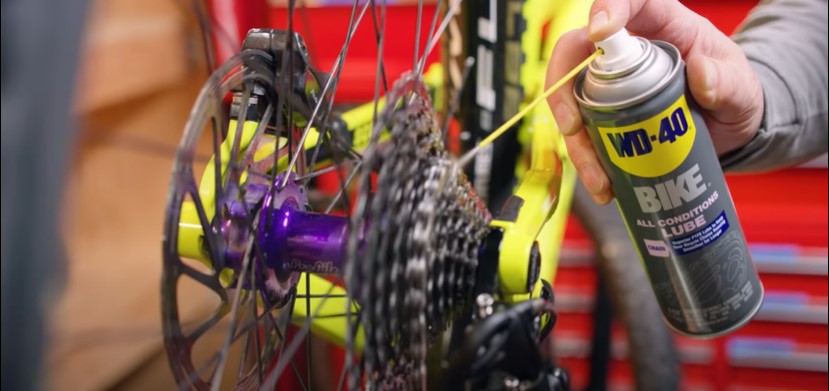If your bike has been sitting in the shed for months, chances are it’s developed some rust. Removing rust from a bike can be a tricky process, but it doesn’t have to be!

In this blog post, we’ll discuss the different techniques and products you can use to remove rust from various parts of your bike—from chain links to handlebars and more.
You’ll need the following tools:
- Dry rags
- Scouring pad
- Link removal tool
- Toothbrushes/ bristle brushes
- Lime juice
- Deep bowl
- Lubricant
Rust-Removal Agents
Before we discuss how to remove rust from specific parts of a bike, let’s take a look at some of the rust-removal agents and tools you can use. These agents are designed to help reduce or eliminate the amount of corrosion on metal surfaces.
Some popular products include WD-40, white vinegar, baking soda paste, and steel wool.
Whichever product you choose should be sprayed directly onto the affected area. Let it sit for a few minutes before scrubbing it with steel wool or another abrasive material.
How to Remove Rust from Bike Chain?
To get rid of the rust on your bike chain, start by spraying it with WD-40 or another lubricant oil that is specifically designed for bikes.
Once the chain is covered in oil, use an old toothbrush or scrub brush to scrub away any debris.
Afterward, rinse it off with warm water and dry it with a clean cloth. For stubborn rust spots, soak the chain in white vinegar overnight before rinsing off and drying as usual.
How to Remove Rust from Bike Frame?
If your bike frame has started developing rust spots, try using baking soda paste as a removal agent.
Start by mixing three parts baking soda with one part water until you create a thick paste that covers the rusted area completely.
Allow it to sit for 10 minutes before wiping it away with a soft cloth or sponge soaked in warm water. Then rinse with cold water and dry thoroughly before reapplying lubricant oil if needed.
For particularly stubborn areas that won’t come off with baking soda paste alone, try using steel wool followed by WD-40 or other lube oil spray as an aftercare measure. This should help prevent further corrosion down the line!
Bike Frame Rust Removal & Restoration
How to Remove Rust from Handlebars & Spokes?
The best way to remove rust from handlebars and spokes is by using abrasive material like steel wool or sandpaper along with WD-40 or another lube oil spray specifically designed for bikes (such as Prolink).
Start by spraying each spoke individually and rubbing them gently with steel wool until all traces of rust are gone; then move on to handlebars if needed and repeat this process until satisfied with the results.
Again, applying lube oil spray afterward will help protect against future corrosion so don’t forget this step!
How to Remove Rust from Bike Rims?
If your bike rims have started showing signs of corrosion, start by removing any dirt buildup first using an old toothbrush dipped in warm soapy water; then rinse them off thoroughly before beginning any further cleaning procedures such as those mentioned above (WD-40 spray followed by steel wool rub down).
Don’t forget about reapplying lube oil spray afterward – this will go a long way toward preventing further damage due to rain exposure over time!
If you are looking for pro tips then watch the video
Conclusion:
Removing rust from a bike isn’t difficult—you just need the right tools and techniques!
Whether you’re dealing with rusty handlebars or corroded spokes, there are several agents you can use such as WD-40 spray followed by steel wool rub down (for particularly stubborn areas) that should do the trick nicely without damaging any other components on your bicycle too much in the process.
Just make sure not to forget about applying lube oil afterward which helps protect against future corrosion when exposed to outside elements!
We hope this comprehensive guide has given you all the information necessary for tackling this tedious but ultimately rewarding project head-on – happy biking!
Read More
How Fast Does A Mountain Bike Actually Go?
What’s The Average Cycling Speed Of A Bike Commuter?
5 Best Peloton Bike Cleats For Fearless Stroking!